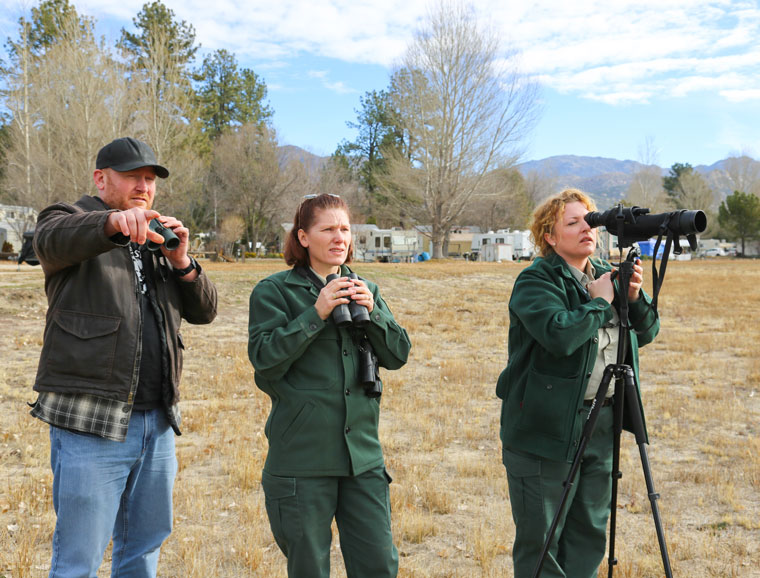Riverside County budget outlook worsening: Fire and sheriff’s services under microscope
The Riverside County budget doesn’t play fair. The fiscal year 2016-17 budget, which the Riverside County Board of Supervisors adopted this fall, was very tight and there was agreement for minimal increases next year while awaiting revenues to grow.
However, rather than slowly balancing revenues and expenditures, the budget is rapidly turning red, bright red, according to County Executive Officer Jay Orr.
In his mid-year report to the board, Orr wrote, “At midyear, the county is experiencing additional headwinds with long-term implications. Property and sales tax related revenues are projected to come in $8.2 million short of current year estimates, which requires reassessing out-year assumptions …
“These ongoing factors necessitate a reassessment of the county’s revenue assumptions and refinement of the budget strategy going into the FY 17/18 budget cycle,” he concluded.
Regarding the possible drop in property-tax revenue, Ray Smith, the county’s public information officer, wrote in an email to the Town Crier, “While assessments and the tax roll remain as projected, revenue has fallen by an amount that is within statistical variance, given the overall tax roll.
“The county does not know exactly what has caused the drop but will continue looking at that question and will report again on the situation in the third-quarter report,” he stated.
Besides property revenue falling below the estimate, two major programs may impose significant demands on the county budget. The first is the recently re-negotiated salaries for state firefighters. Riverside County contracts with the state for firefighting services.
The effect on this year will be about $2 million, but next fiscal year, the effect will approach $11 million.
The second unexpected change is the governor’s proposal to shift responsibility for in-home supportive services to counties. Orr estimates this may cost the county $44 million annually.
Neither of these changes was under the county’s control. But, Orr did suggest to the board that “… the increasing labor costs for Cal Fire beg the question of whether we can afford our existing model of service delivery.”
But the fire department is not the only service Orr has under scrutiny. Code Enforcement is another agency that could under go a wholesale change, including staff reductions. The Sheriff’s Department funds may not be cut, but staffing may be shifted away from patrols in the unincorporated areas.
Other looming budget costs include pensions contributions, the possibility of the repeal of the Affordable Care Act and the cost of operating the new East County Detention Center.
Eliminating the ACA could return the situation where large numbers of uninsured residents need support from the county health-care system.
In order to re-gain control of the county’s burgeoning costs, Orr told the board that all actions are on the table. He directly mentioned accelerating efforts for efficiencies, re-evaluating service levels, eliminating General Fund support for some non-core functions, investing in greater use of technology, and consolidating or cutting duplicative services.
Orr also suggested that in order to fund the new jail staff, the sheriff’s budget would reduce patrols in unincorporated areas to minimal staffing.
In response to the Town Crier’s inquiry, Sheriff Stan Sniff issued the following statement, “The board has the authority to set the budget for all county operations, including the Office of Sheriff. The Sheriff has the responsibility to follow the board’s directions on budget priorities and had to begin cutting the department’s operations to meet those reduced funding levels, by reducing the numbers of staff carried on payroll, for this fiscal year (FY 16/17) through routine attrition (retirements, resignations & terminations).
“The already overcrowded and undersized county jail systems serve all our state and local law enforcement agencies within Riverside County, and was already laboring heavily under the new PLO consent decree, so it was not appropriate to cut staffing or reduce jail capacity for any budget savings,” he continued.
“This leaves the full impact of the projected county budget cuts — now grown in size since July 2016 to near $40 million — primarily on the back of both unincorporated patrol staffing levels, and in addition, also on the reductions to staffing levels of many of our frontline joint teams and task forces all across the county, as well as other operations,” Sniff said in the statement.
“In an effort to responsibly live within the sharply reduced budget target this year, county unincorporated patrols at each of our countywide patrol stations must be reduced to the minimum staffing of two deputies (0.75/1,000) on duty at any given time, all by the end of this fiscal year (June 2017),” he stated.




